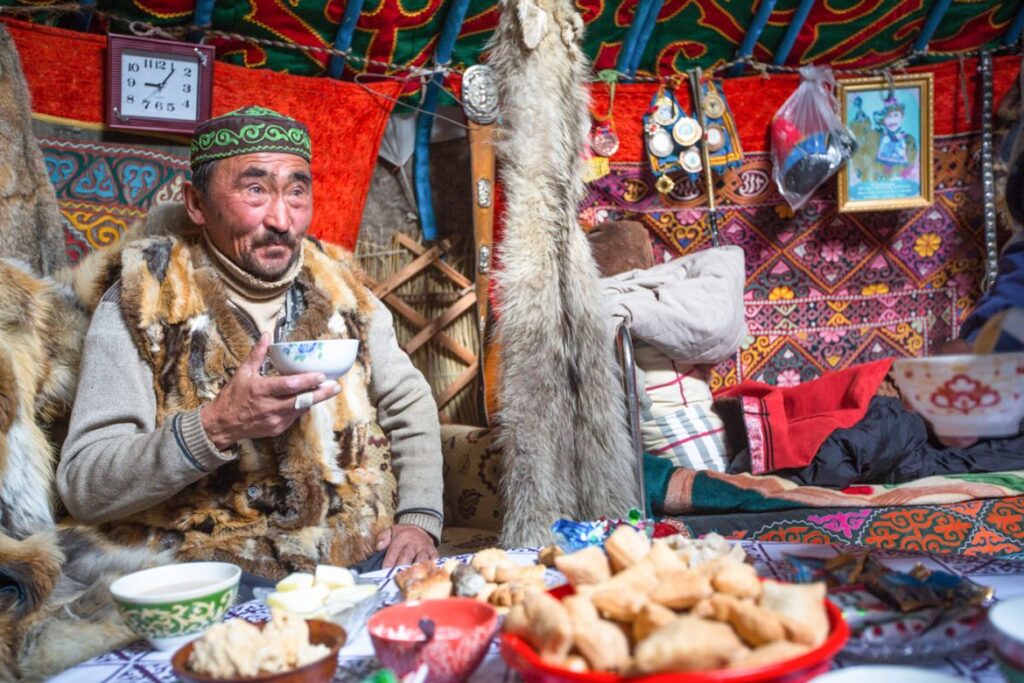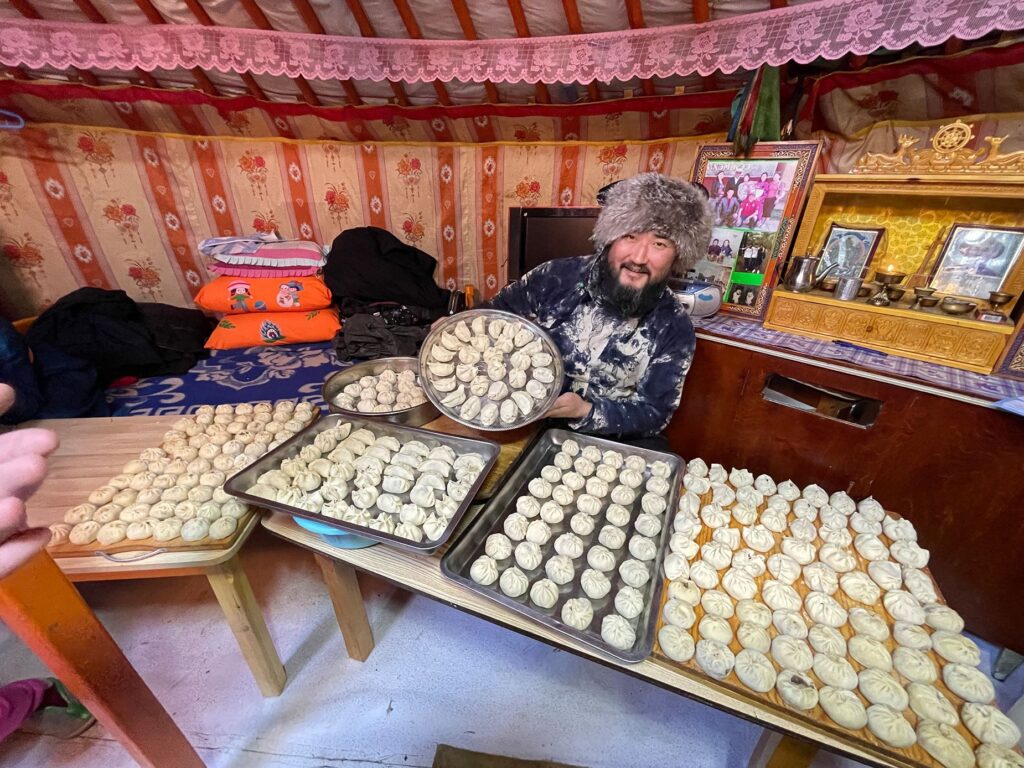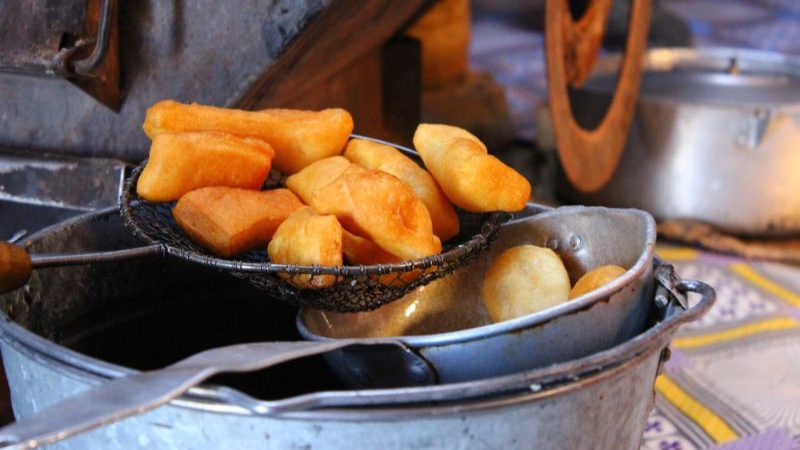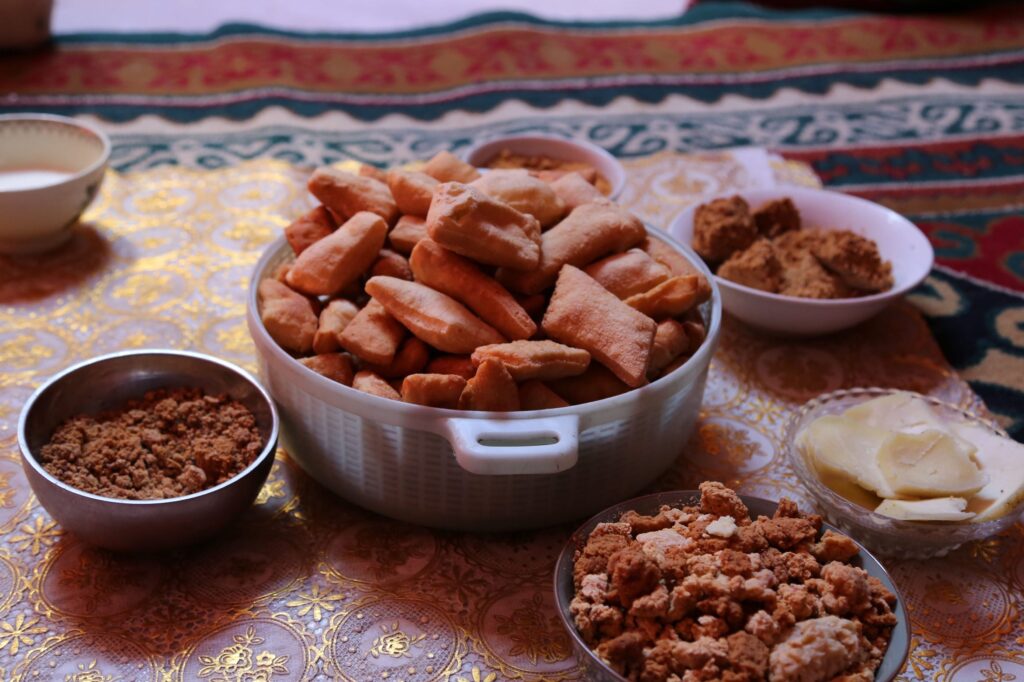Discovering Mongolian Cuisine: A Culinary Adventure for Tourists
Mongolian cuisine offers a rich and diverse culinary experience that reflects the country’s nomadic heritage and vast landscapes. For tourists eager to explore Mongolian food, the journey is as much about tradition and culture as it is about taste. Here’s a guide to what you can expect:
Traditional Dishes:
- Booze (Mongolian Dumplings): These steamed or boiled dumplings are a staple of Mongolian cuisine. Filled with minced meat (usually beef or mutton) and seasoned with onions and spices, buuz are a beloved comfort food, often enjoyed during festivals and family gatherings.
- Khuushuur: These deep-fried pastries are similar to dumplings but with a crispy exterior. Filled with seasoned meat and occasionally vegetables, khuushuur is a popular street food, especially during celebrations.
- Mutton and Beef: Given Mongolia’s rich pastoral tradition, meat—particularly mutton and beef—is a cornerstone of the diet. Dishes like tsuivan (stir-fried meat with vegetables and noodles) and shol (meat soup) showcase the hearty, flavorful nature of Mongolian meat dishes.
- Khorkhog: This traditional barbecue involves cooking meat (often mutton) with hot stones inside a sealed container, resulting in tender, smoky meat. It’s a communal dish, often prepared for special occasions and large gatherings.
- Tsuivan: A savory noodle dish combining meat, vegetables, and noodles, tsuivan is a comforting and filling meal, ideal for replenishing energy after a day of exploring.





Beverages:
- Airag (Fermented Mare’s Milk): This traditional drink is a fermented dairy product made from mare’s milk. With a slightly tangy flavor and low alcohol content, airag is a unique experience and a key part of Mongolian hospitality.
- Milk Tea: Often enjoyed throughout the day, Mongolian milk tea is a blend of black tea, milk, and sometimes salt. It’s a warm and comforting drink, commonly served to guests and during meals.
Cultural Experience:
Mongolian food is deeply tied to its nomadic lifestyle and the natural environment. Meals are often shared communally, and traditional dishes are prepared with methods that have been passed down through generations. Eating with locals provides insight into their way of life and traditions.
Tips for Tourists:
- Embrace the Experience: Be open to trying traditional dishes, even those that might be unfamiliar. Mongolian food is hearty and flavorful, and tasting local specialties is a key part of the cultural experience.
- Respect Traditions: Meals are an important part of Mongolian culture. Participating in traditional dining practices, such as sharing food and drinks, will enrich your experience.
- Seasonal Specialties: Depending on the time of year, you might find seasonal dishes like bansh (small dumplings) in winter or fresh naadam (barbecued meat) during festivals.
Mongolian cuisine offers a hearty and authentic taste of the country’s rich cultural heritage. Whether you’re savoring a warm bowl of meat soup or sampling traditional airag, exploring Mongolian food is a memorable part of your travel adventure.
